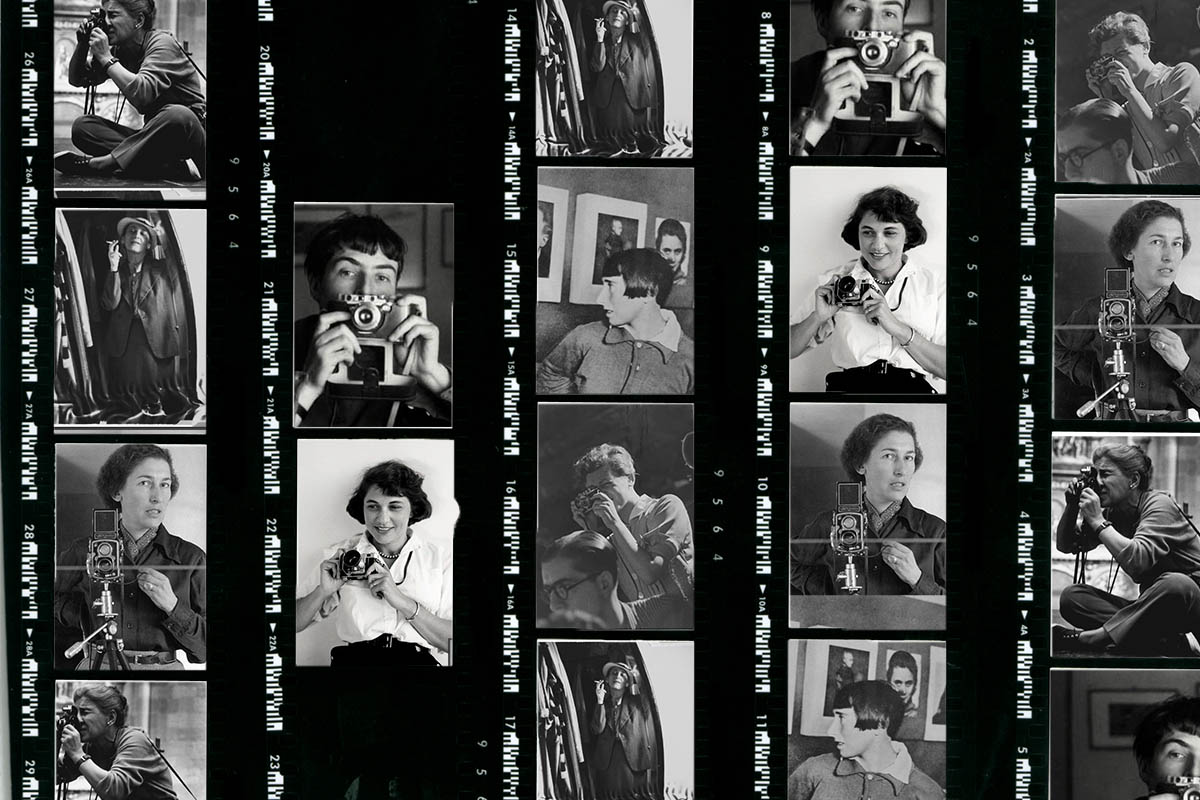Female Jewish photographers Diane Arbus, Vivian Maier, Annie Leibovitz, and Cindy Sherman have gained global acclaim for capturing everything from the biggest celebrities of their days to those on the fringes of society to fascinating occurrences in everyday life. Many of their fellow image creators, including the seven below, have only recently had their work recognized in what is still a male-dominated field. But they all pushed creative and societal boundaries in their lives and art, and made a lasting impact on photography as we know it.
1. Trude Fleischmann (1895-1990)
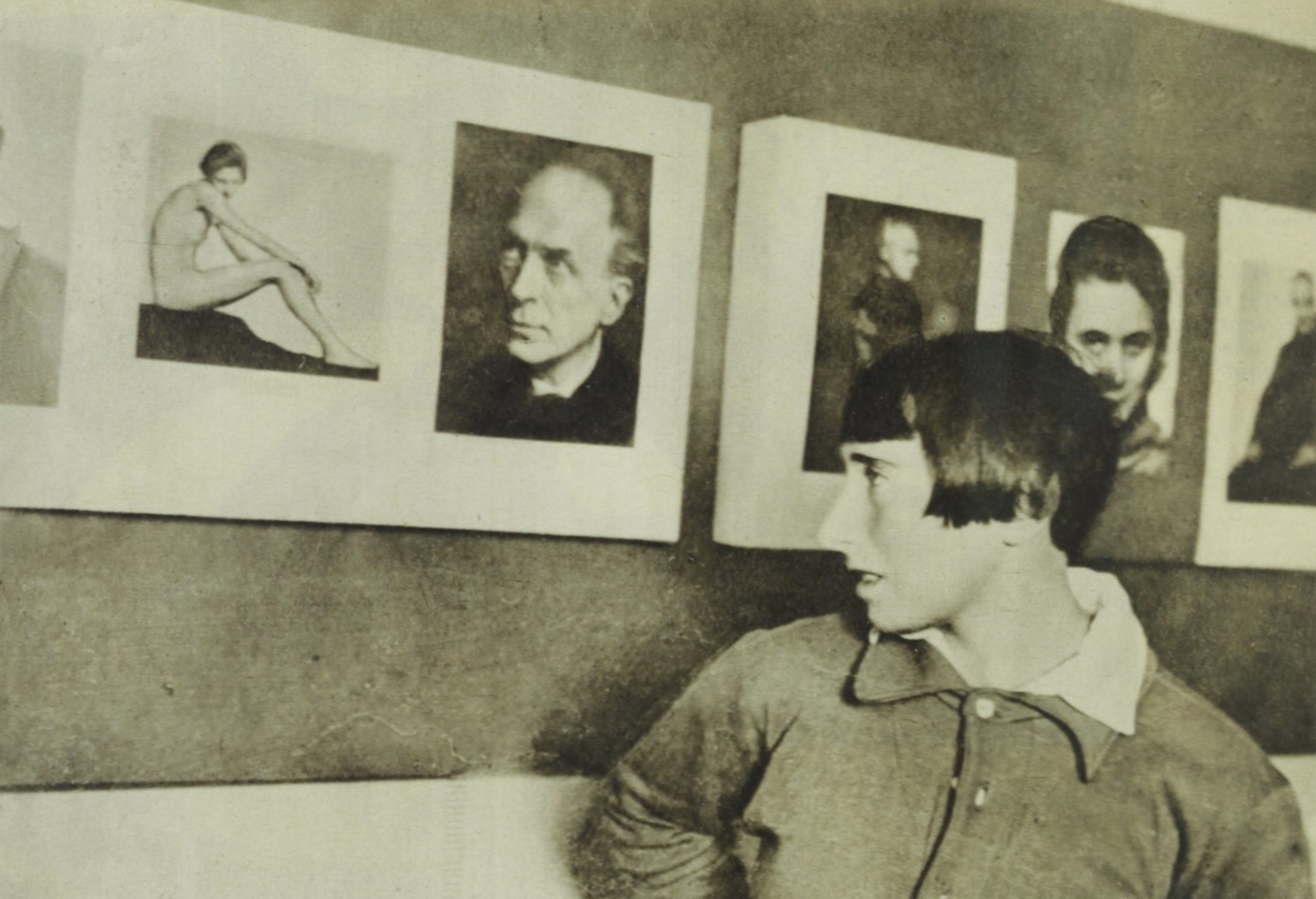
Austrian photographer Trude Fleischmann received her first camera at age 9 and started her own studio at 25 in Vienna. Capturing the city’s art and society culture, she developed an original style using diffused artificial light and often photographed erotic scenes. Her images of dancer Claire Bauroff in the nude were actually confiscated by the police on charges of indecency.
In 1938, following the annexation of Austria, Fleischmann fled to Paris and eventually settled in New York. She reestablished a career as a portrait photographer, with subjects including Eleanor Roosevelt, Albert Einstein, and many fellow immigrants. She also worked as a fashion photographer for Vogue. Throughout her life, she encouraged other women to pursue photography.
Photographs by Trude:
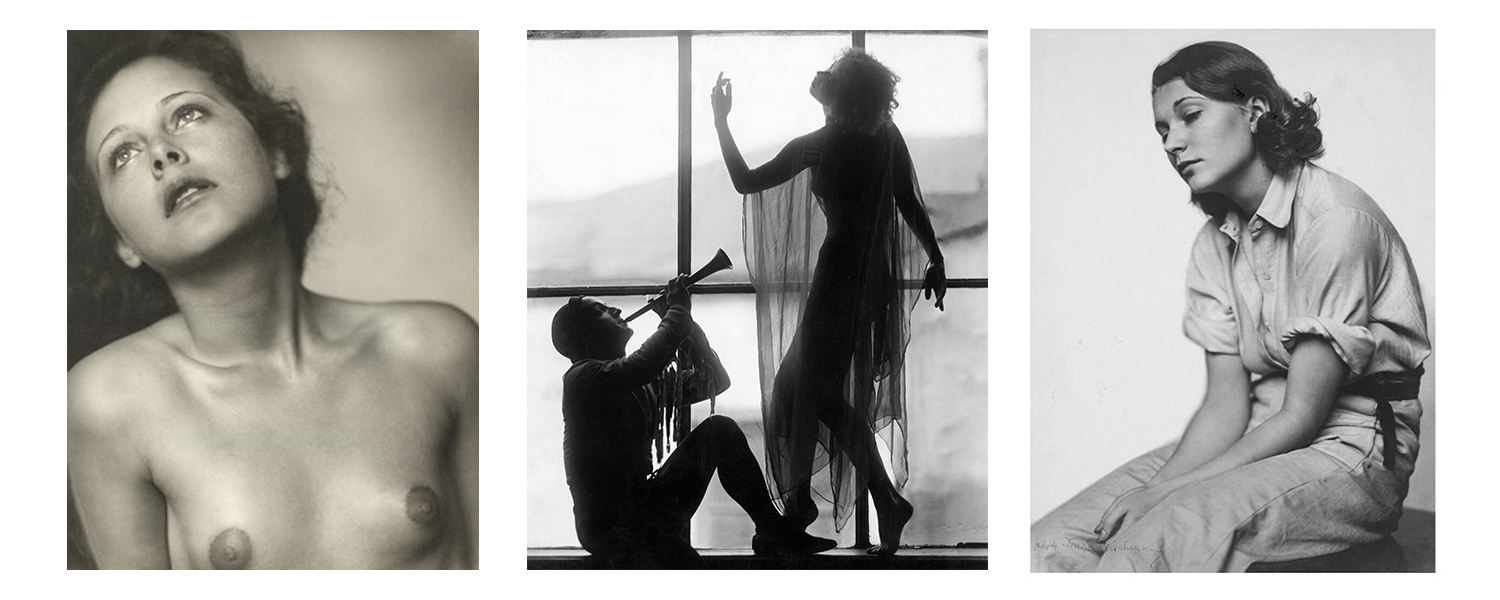
1) Hedy Lamarr, Gelatin silver print, ca. 1930, NYPL, The Miriam and Ira D. Wallach Division of Art, Prints and Photographs, Photography Collection. Transfer from Picture Collection, 1991. © Trude Fleischmann.
2) Dancer Katta Sterna and Ernst Matray. Picture taken by Trude Fleischmann 1928. (Photo by Trude Fleischmann/ullstein bild via Getty Images.
3) Inge Schön, 1933. Photo by Trude Fleischmann.
Scroll through Trude Fleishmann photos here.
2. Lotte Jacobi (1896-1990)
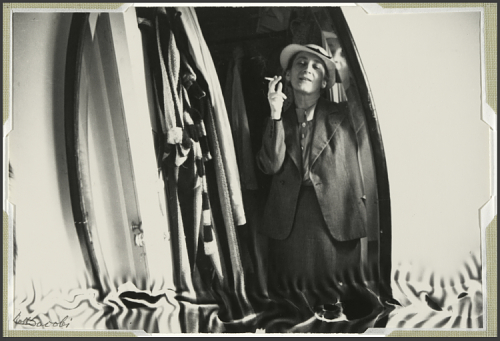
Fourth-generation German photographer Lotte Jacobi’s work was so renowned that Nazi leaders gave her the opportunity to be an honorary Aryan. Jacobi refused, leaving Berlin and her family studio patronized by celebrities and politicians. Setting up a new business in New York City, she continued creating portraits of leading social and artistic figures, including Robert Frost, W. E. B. Du Bois, and Marc Chagall. She also experimented with making photograms by exposing photosensitive paper to light to create abstract shapes. Outside of photography, Jacobi was passionate about politics, representing her adopted state of New Hampshire at the 1980 Democratic National Convention.
Photographs by Lotte:
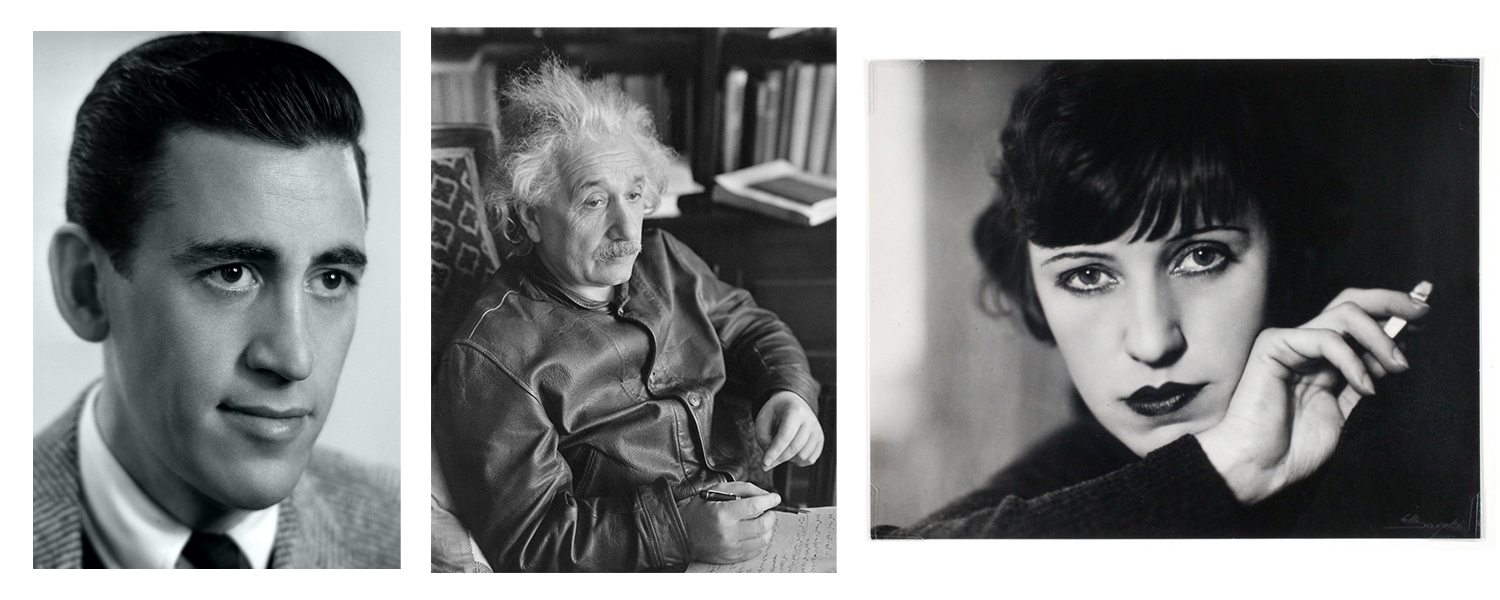
1) Photo portrait of J. D. Salinger used for the first-edition back cover of The Catcher in the Rye (1951) by Lotte Jacobi.
2) Half length portrait of scientist Albert Einstein wearing a leather jacket and sitting among books, writing on a piece of paper with a pen and appearing contemplative, by the photographer Lotte Jacobi, 1938. (Photo by University of New Hampshire/Gado/Getty Images)
3) Lotte Lenya, actress, Berlin, by Lotte Jacobi, 1930. (Gift of Bernadette Hunter, 1986, The International Center of Photography.)
See more Lotte Jacobi photos here.
3. Ellen Auerbach (1906-2004)
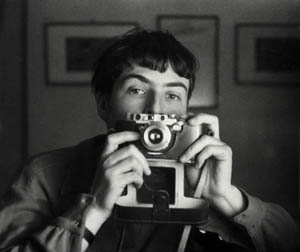
During the Weimar Republic, Ellen Auerbach and creative partner Grete Stern started Ringl and Pit, one of the first photography businesses run by women. Their goal was to question how women were represented, even humorously pushing gender boundaries in their commercial work. After fleeing to Palestine, Auerbach became the official photographer for the Women’s International Zionist Organization. She started a children’s photo studio with her future husband Walter Auerbach, a left-wing activist.
After moving to New York, Auerbach freelanced for magazines like Time and Life and created record covers for Columbia Masterworks. After collaborating with a child psychologist, she started a new career in educational therapy. While few of her Ringl and Pit images survived, she experienced a career revival in the 1980s, following the publication of two books featuring photos she took in Mexican with nature photographer Eliot Porter.
Photographs by Ellen:
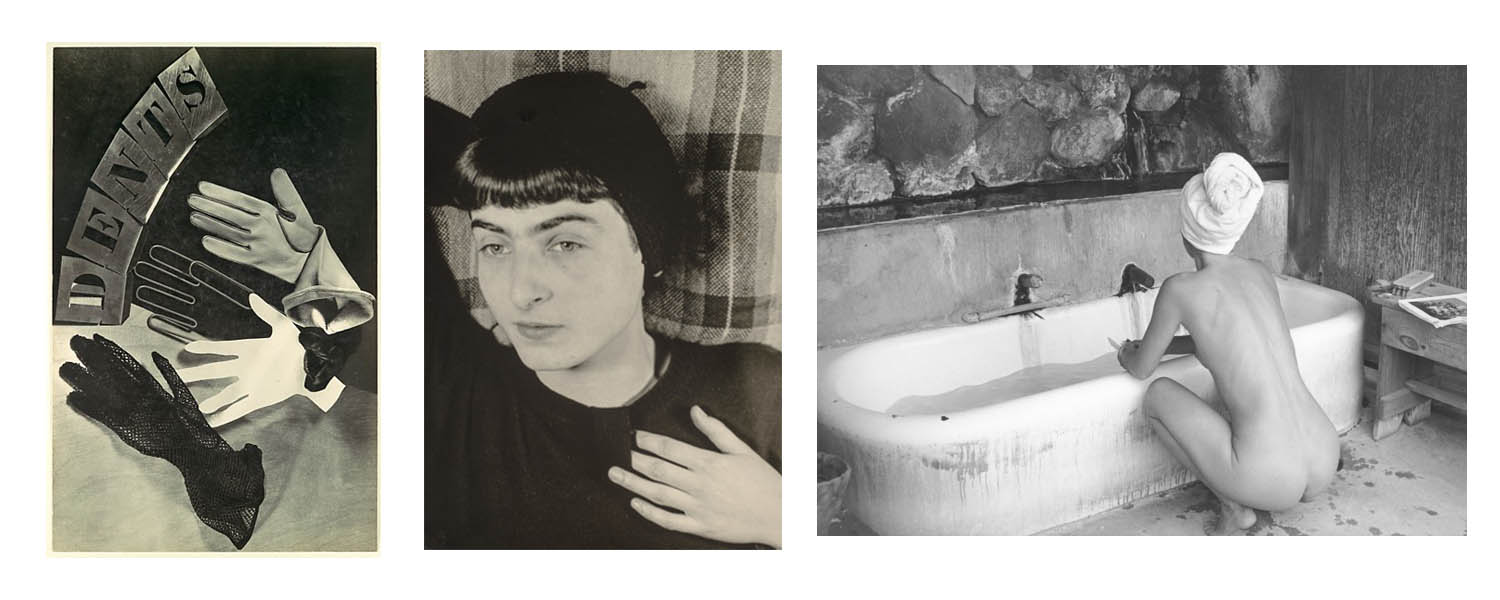
1) “Dentsca,” 1934, by ringl + pit (Grete Stern and Ellen Auerbach), Met Museum © 2020 VG Bild-Kunst, Bonn / Artists Rights Society (ARS), New York
2) “Ellen Auerbach,” c. 1928 by ringl + pit. Gelatin silver print, Galerie Berinson, Berlin. Via MoMA.
3) “Sulphur Bath, Big Sur,” 1949, by Ellen Auerbach. Via the Paris Review.
See more Ellen Auerbach photos here.
4. Gerda Pohorylle, AKA Gerda Taro (1910-1937)
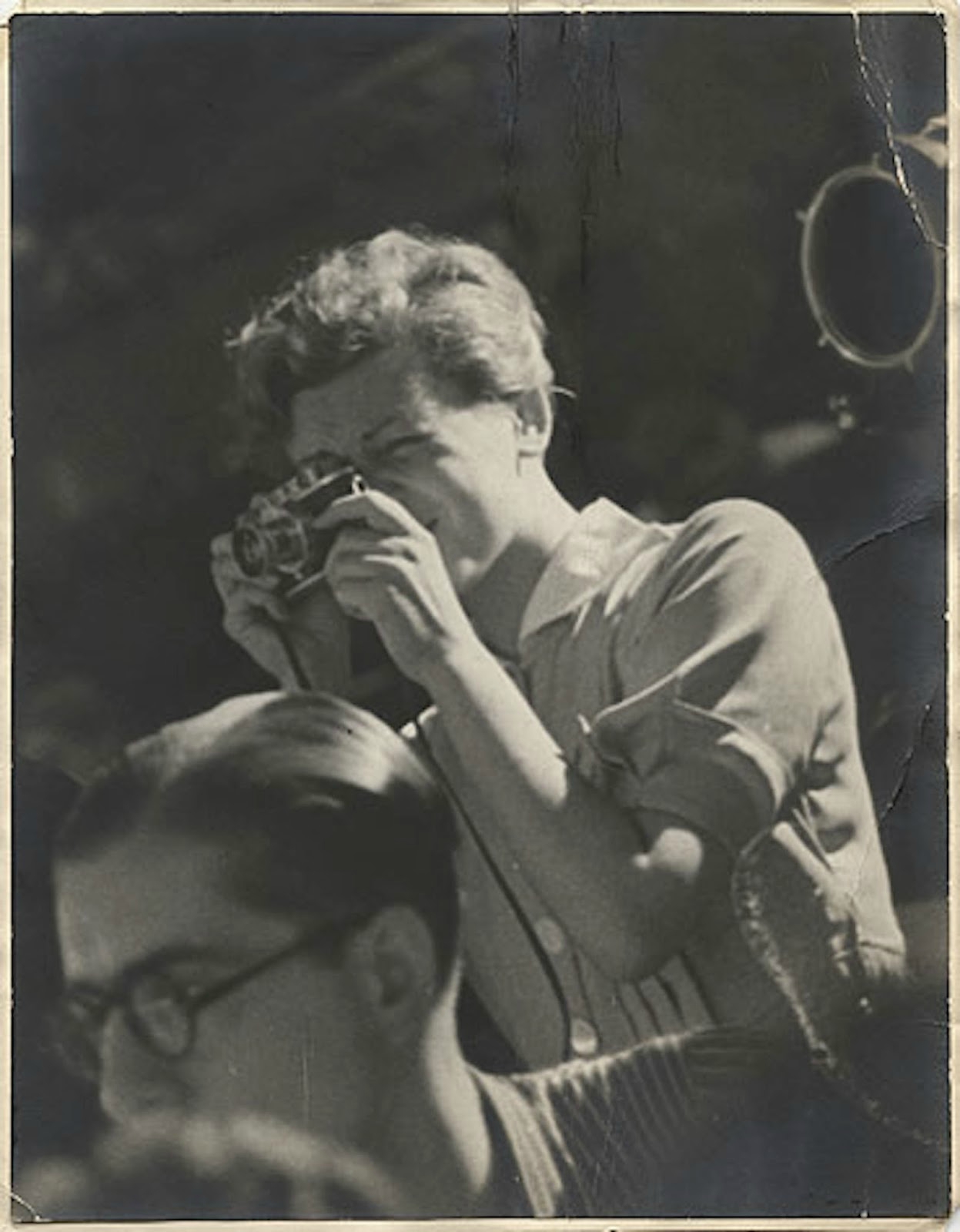
Gerda Pohorylle is considered the first female photojournalist to die on the battlefield. Pohorylle, who was born in Germany, was drawn to leftist politics during the rise of the Nazi party. She moved to Paris and then Spain to document historical events and fights for justice. She worked with her lover, Hungarian André Friedman, producing images under the alias Robert Capa. While photographing the Spanish Civil War, Pohorylle was sideswiped by a tank and died at age 26. Thousands attended her Paris funeral, attesting to her legacy in the anti-fascist struggle.
Despite the continued commercial and critical success of Robert Capa, Pohorylle has been traditionally viewed as Friedman’s apprentice. But in recent years, her work has had renewed acclaim. Unfortunately, a 2016 exhibit of her work in Leipzig, Germany was vandalized with black paint, a suspected anti-Semitic attack. Want to learn more? Italian author Helena Janeczek,’s award-winning historical fiction book on Pohorylle, The Girl With the Leica, was recently translated into English.
Photos by Gerda:

1) Woman training for a Republican militia, August 1936, by Gerda Taro. Via Wikimedia Commons.
2) Republican sailors playing musical instruments on board the battleship Jaime I, Almería, Spain. February 1937, by Gerda Taro. Via Wikimedia Commons.
3) Republican dinamiteros, Carabanchel neighborhood of Madrid, June 1937, by Gerda Taro. (Gift of Cornell and Edith Capa, 1992, The International Center of Photography.)
See more Gerda Taro photos here.
5. Eve Arnold (1912-2012)
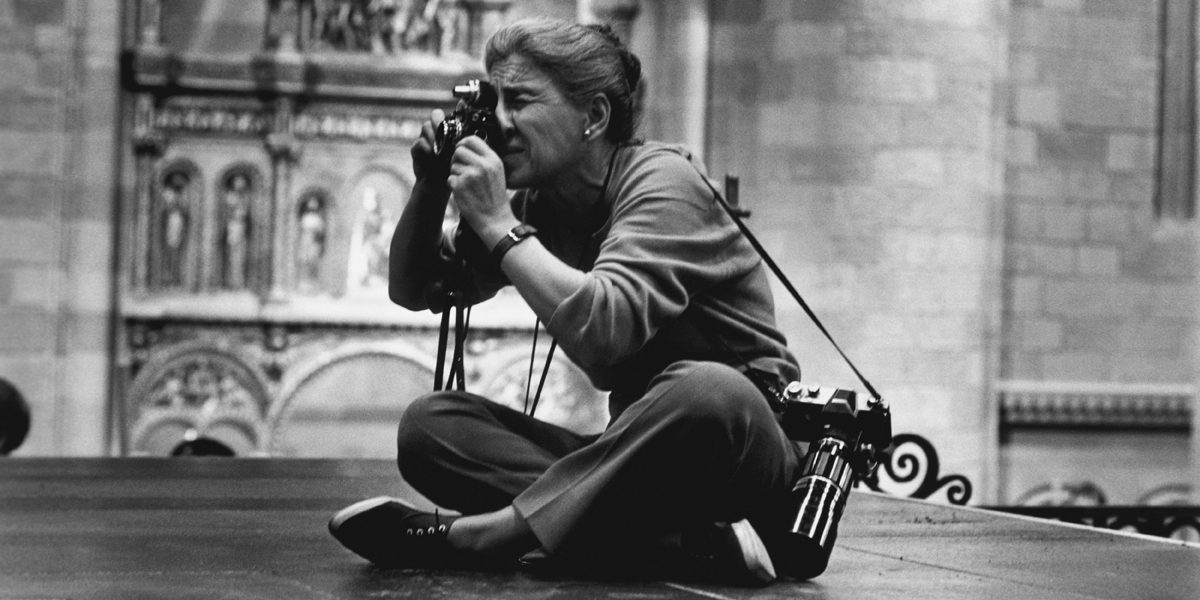
The descendent of Russian-Jewish immigrants, Philadelphia-born photojournalist Eve Arnold shot many of the biggest figures and events of the 20th century while also turning her camera to the most marginalized. While she planned to become a doctor, the gift of a camera from a boyfriend inspired her to pursue photography. Arnold befriended many of her famous subjects, who included Marlene Dietrich, Queen Elizabeth II, Malcom X, and Marilyn Monroe on the set of The Misfits (1961). She also explored apartheid South Africa, closed socialist societies in China and the Soviet Union, and veiled women in Afghanistan.
Closer to home, Arnold covered the Army-McCarthy hearings and took portraits of American First Ladies. She also worked as a still photographer on more than 40 film sets to support herself financially and experimented in movie making. In her lifetime, she took over 750,000 photos and published 12 books.
Photos by Eve:
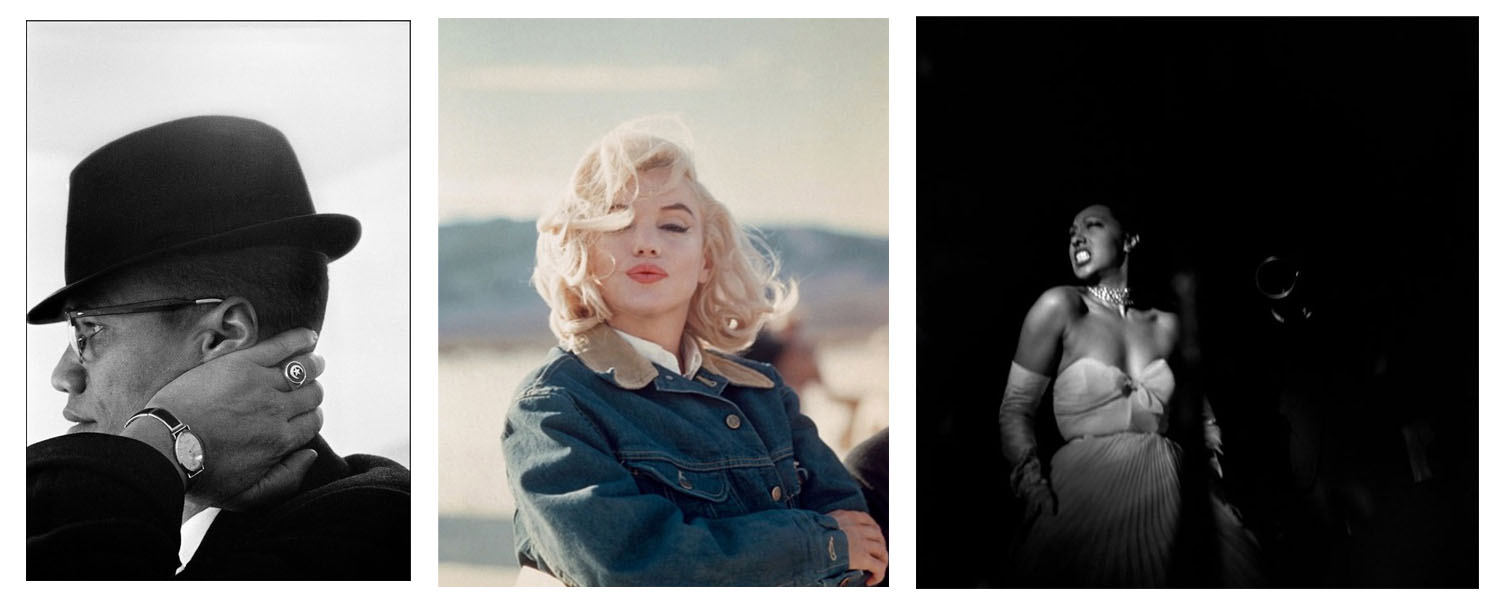
1) Malcolm X, during his visit to Black Muslim owned enterprises in Chicago, Illinois, 1962.
2) Marilyn Monroe during the filming of “The Misfits.” Nevada, 1960.
3) Josephine Baker in Harlem, 1950.
All © Eve Arnold/MagnumPhotos, via @evearnoldphotographer on Instagram.
See all Eve Arnold photos here.
6. Gisèle Freund (1912-2000)
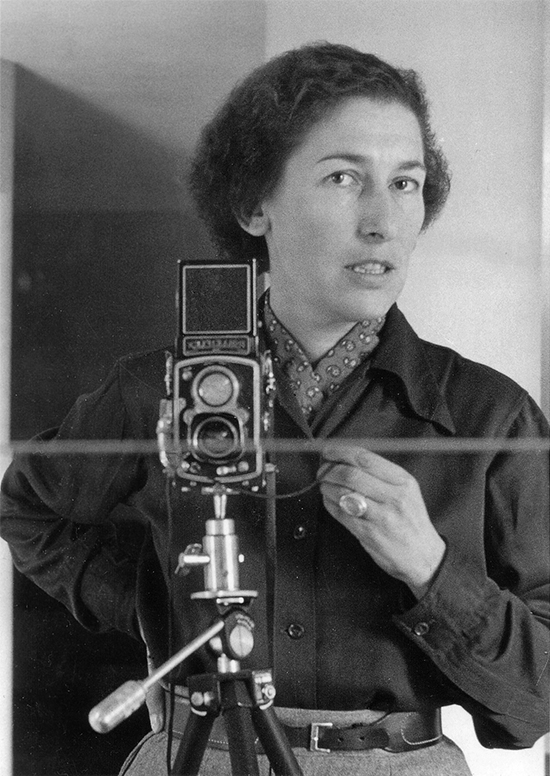
Born in Berlin, Gisèle Freund photographed some of the most important artists and writers of her day, from Virginia Woolf to Frida Kahlo, and was kicked out of Argentina after capturing the opulence of Evita Perón. Freund came from a wealthy family and developed her passion for photography after being given a Leica camera. She escaped her home country for France in 1933 on the brink of poverty. She photographed many regulars of the famed Parisian Shakespeare and Company bookstore, including Simone de Beauvoir, T. S. Eliot, and James Joyce.
Freund was also an innovator in color photographer and an accomplished photojournalist, covering Latin America for publications like Life. In France she was given the Legion of Honor and was the first photographer honored with a retrospective at the Musée National d’art Moderne. Despite her accomplishments, Freund has been less recognized compared to her contemporaries. It was only in 2015 that an almost forgotten collection of photos she took of Frida Kahlo and Diego Rivera was published as a book.
Photos by Gisèle:
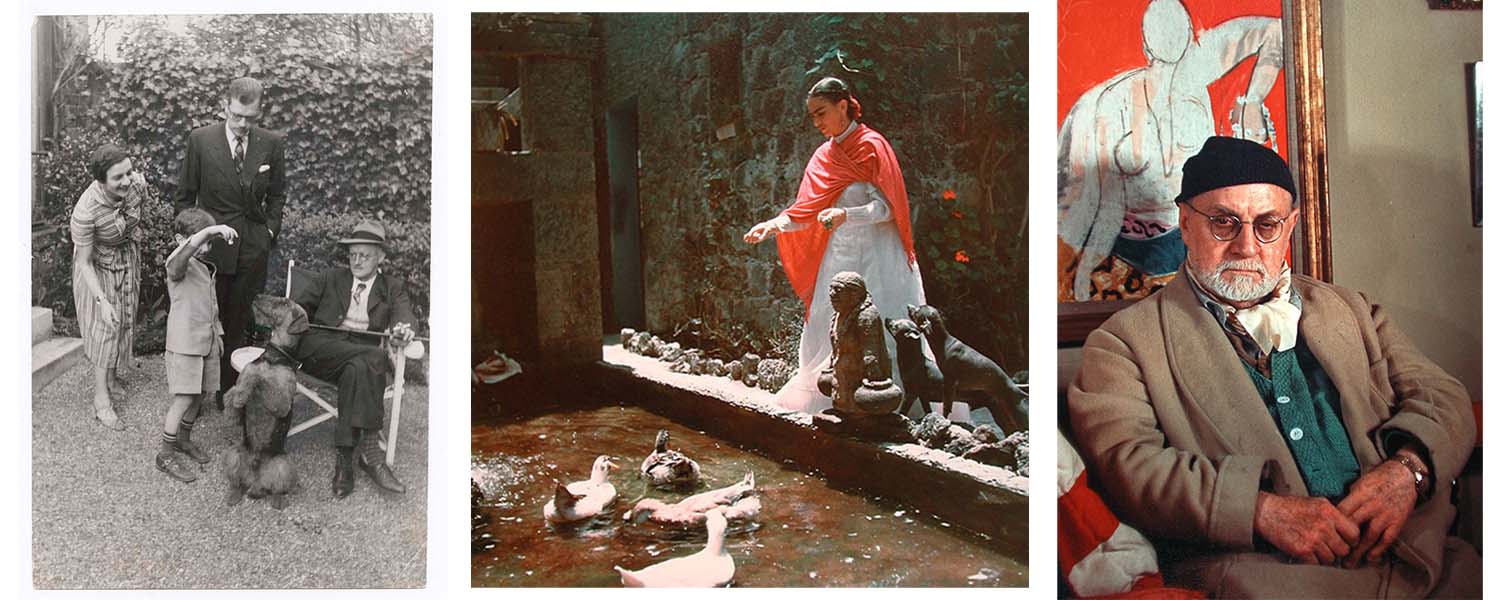
1) Three generations of Joyces. James Joyce, seated, Giorgio standing, and Stephen playing with Schiap the dog Schiaparelli gave him, while Helen Joyce (Giorgio’s wife looks on). Taken in the garden of Giorgio’s house in Paris, 1938. (The LIFE Magazine Collection, 2005.)
2) Frida Kahlo and 3) Henri Matisse via http://www.gisele-freund.com/
More photos by Gisèle here.
7. Ruth Orkin (1921-1985)
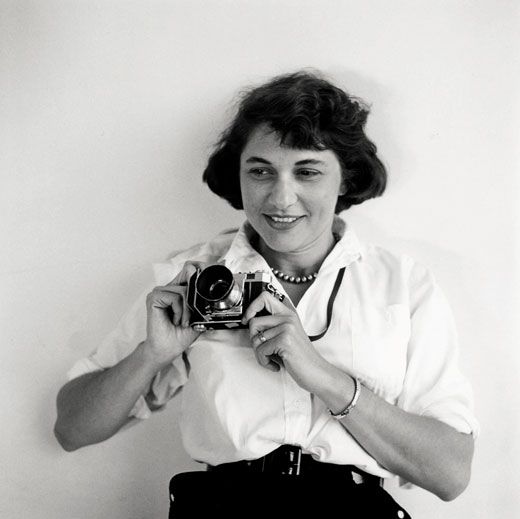
Most famous for her 1951 photograph “An American Girl in Italy,” American photographer Ruth Orkin grew up in Hollywood, the daughter of a silent film actress. She captured the entertainment industry with portraits of Lauren Bacall, Marlon Brando, and Alfred Hitchcock. At age 17, she biked from Los Angeles to New York City for the 1939 World’s Fair, taking photos along the way. Working as a nightclub photographer in New York, her first freelance project was shooting Leonard Bernstein for the New York Times. Another highlight was documenting the 1951 Operation Ezra, when over 120,000 Iraqi Jews were airlifted to Israel.
Orkin created her most iconic image highlighting street harassment as part of the “Don’t Be Afraid to Travel Alone” series. With husband Morris Engel, she worked on two independent films, Little Fugitive (1953) and Lovers and Lollipops (1955). Later in life, she taught photography and captured Central Park through her apartment window, images that were published in two books.
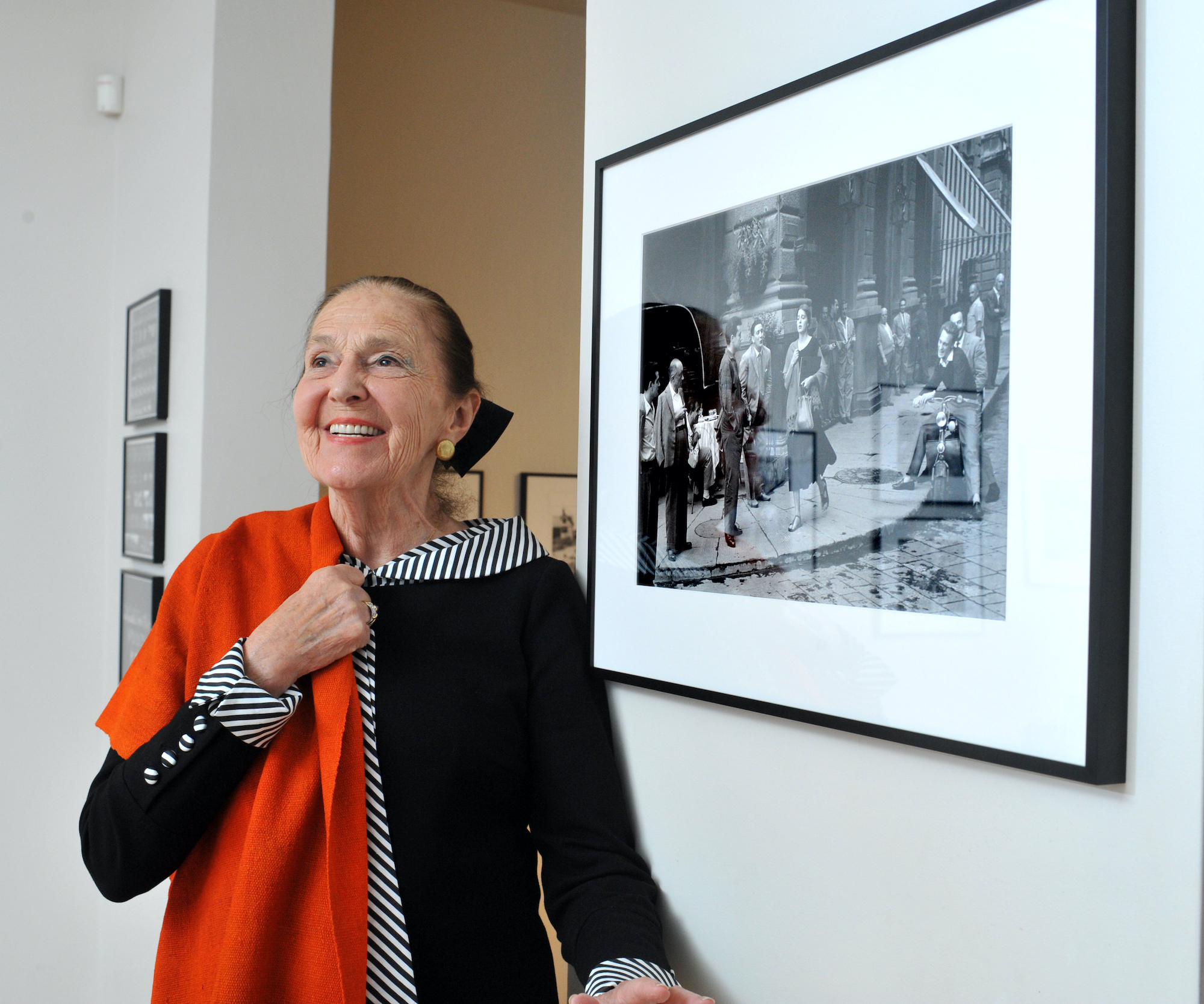
Photos by Ruth:
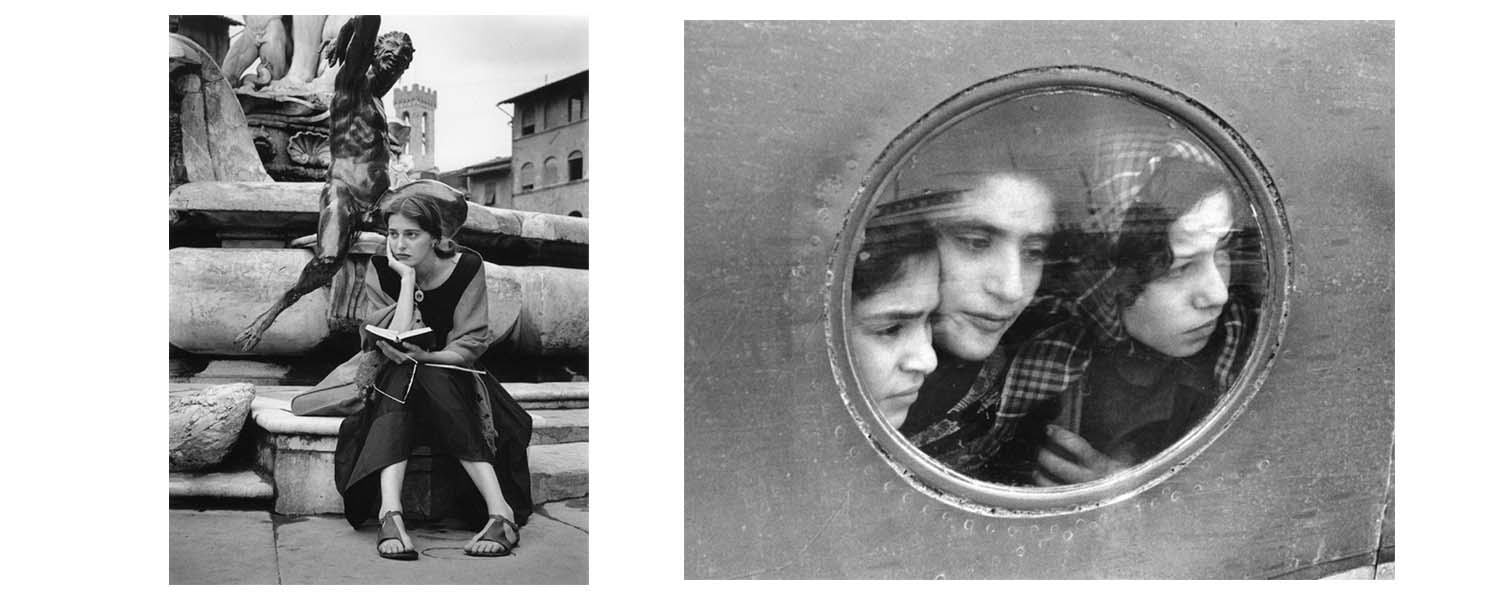
1) Jinx with statue, Florence, 1951 and 2) Jewish refugees, Israel,1951. Both via https://www.orkinphoto.com/
All photos by Ruth Orkin here.
